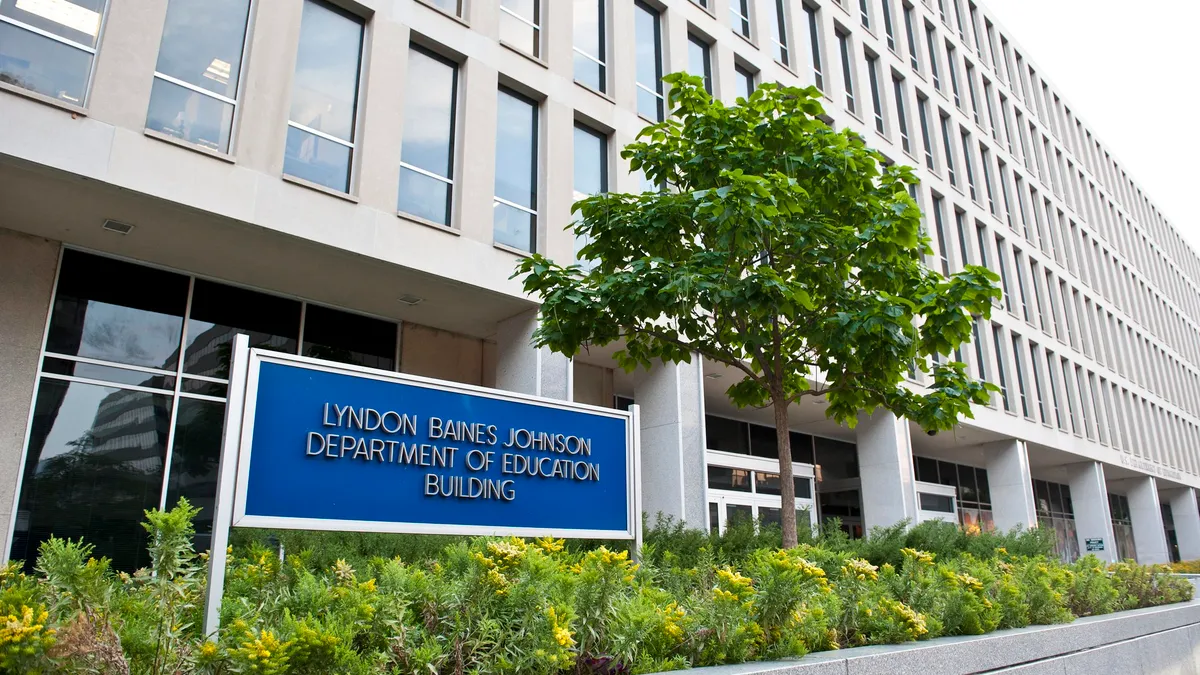Dive Brief:
-
Only 42% of comprehensive support and improvement (CSI) plans seem to be in compliance with certain federal requirements, according to a report sent to Congress on Wednesday by the Government Accountability Office.
-
CSI plans are developed by districts to serve as a guide to underperforming schools' improvement processes. They are required to include needs assessments, resource inequity identification, and evidence-based interventions, among other things. However, 28% of plans reviewed by the watchdog addressed only one or none of these issues.
-
There was wide variation in how districts addressed each of those elements. Some plans, for instance, discussed resource inequities that schools have limited opportunities to address — like which students faced homelessness or poverty — rather than evaluating whether school resources were being inequitably distributed. Overall, only 52% appeared to identify resource inequities at all.
Dive Insight:
During the pandemic, the U.S. Department of Education put CSI and other support and improvement statuses mostly on pause.
“The pandemic wreaked havoc on assessment systems,” education groups and civil rights organizations told Secretary of Education Miguel Cardona in an August 2021 letter.
Identification has since resumed, and more schools are being put on improvement plans.
Currently, about 2.5 million students attend K-12 public schools that have been identified for CSI, per GAO. Those schools are much more likely to serve mostly Black and low-income students, have higher student-teacher ratios, and serve students not proficient in reading or math.
Last week, Houston Independent School District released school ratings showing it had more "D" and "F" rated schools than schools receiving passing grades. It identified 26 schools that will receive district support in fall 2024 and said that up to 50 could end up needing support overall.
While Houston's situation differs from other districts' in that it is currently undergoing a state takeover, it is likely that additional school identification and potentially takeovers are on the horizon in other places.
Not only did the GAO report show that plans overseen by states and districts are lacking more often than not, but it also found the Education Department's local compliance monitoring should be improved.
While the Education Department did successfully identify compliance issues in five out of nine states it monitored between February 2020 to July 2023, the GAO found, it still "may be limited by a weakness GAO identified in Education’s monitoring approach."
Using 2019-20 federal data and CSI plans from June 2022, the government watchdog concluded that the department should update monitoring protocols to ensure CSI plans and funding applications are independently reviewed rather than relying on states and districts to select CSI plans for federal review.
"Although the Department believes that its monitoring has adequately identified areas of non-compliance, it will begin selected CSI plans that are submitted as part of consolidated monitoring beginning spring 2024," wrote Mark Washington, deputy assistant secretary for the Education Department's Office of Elementary and Secondary Education, in its response to the GAO.














